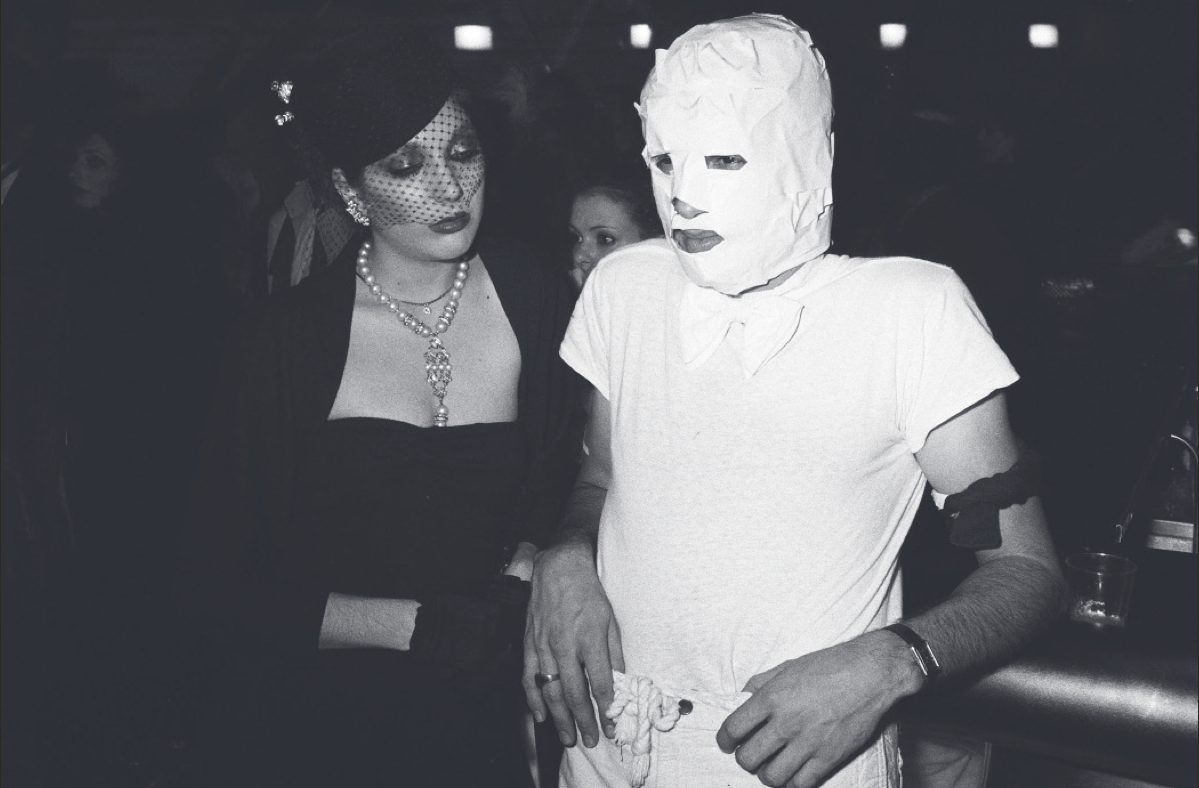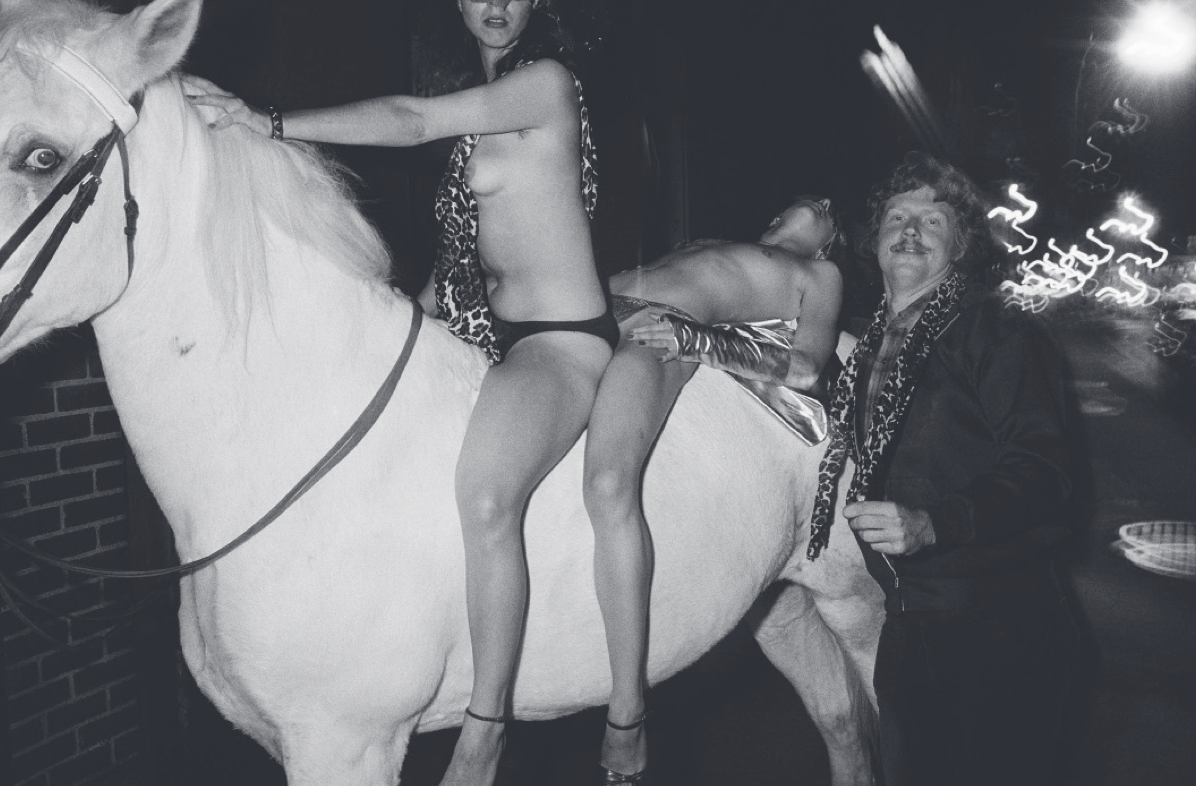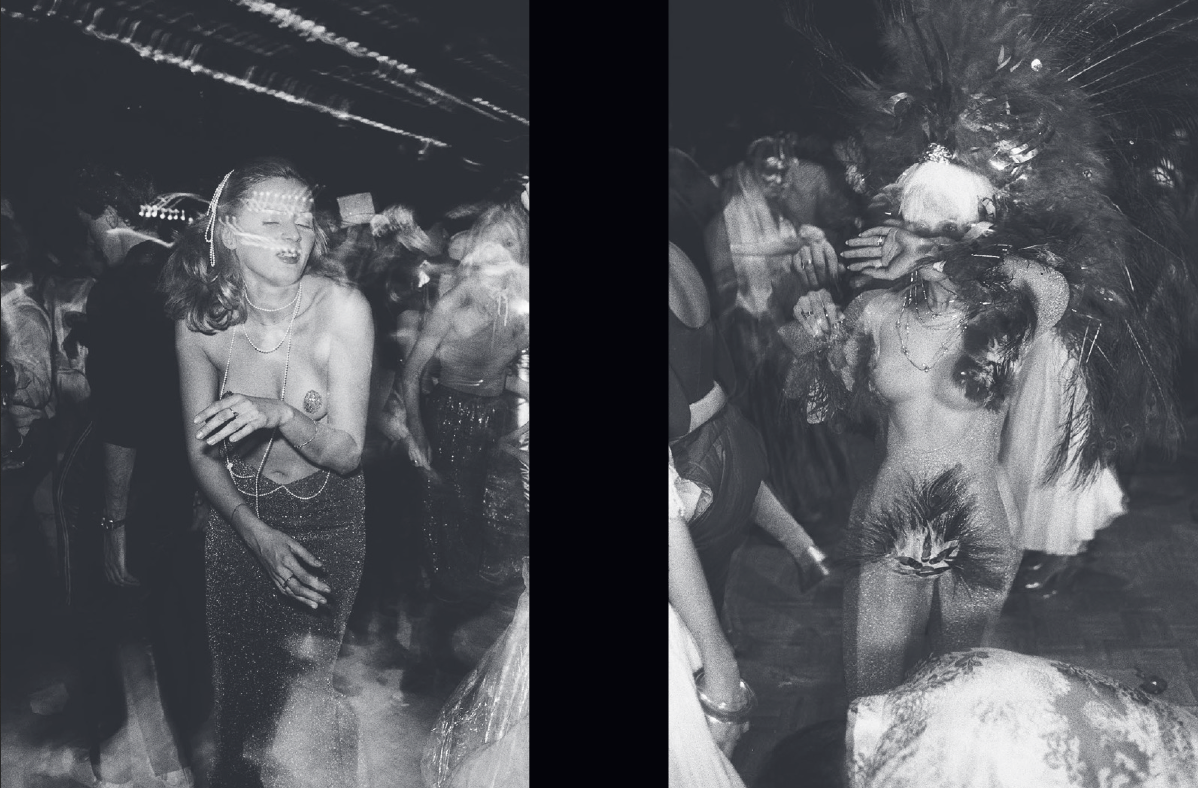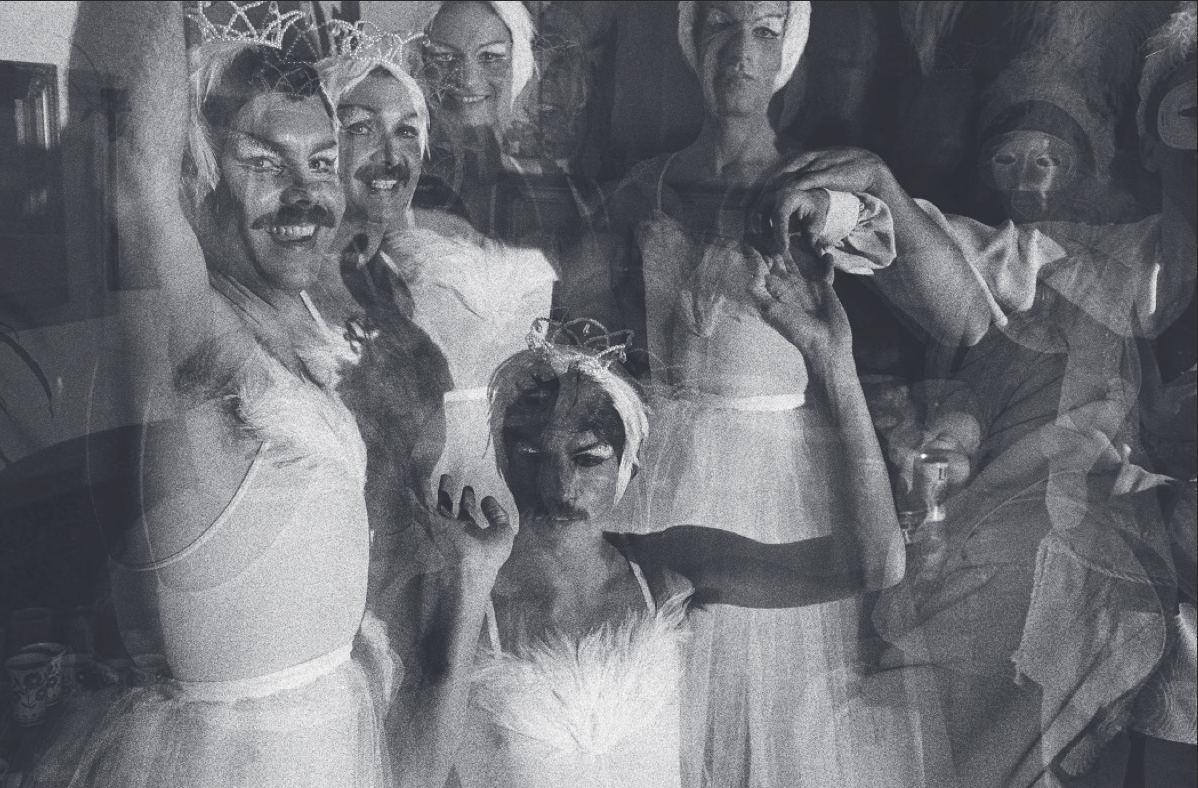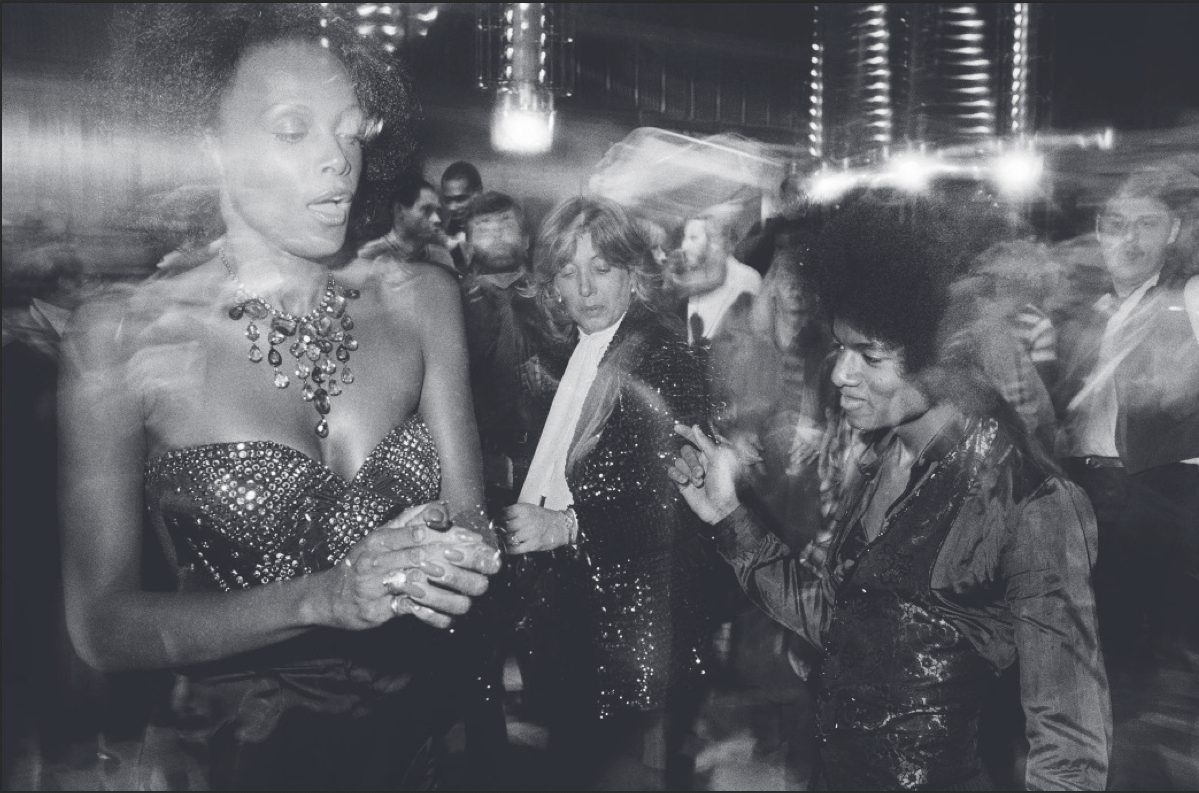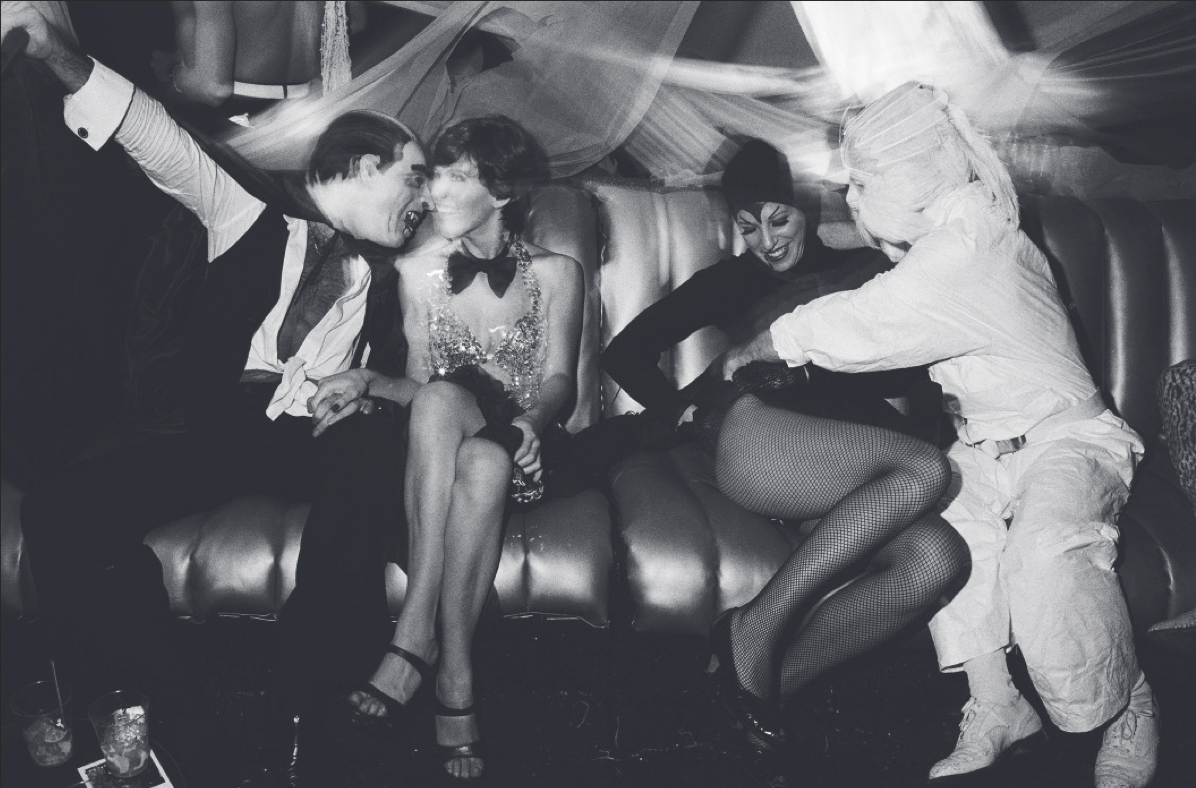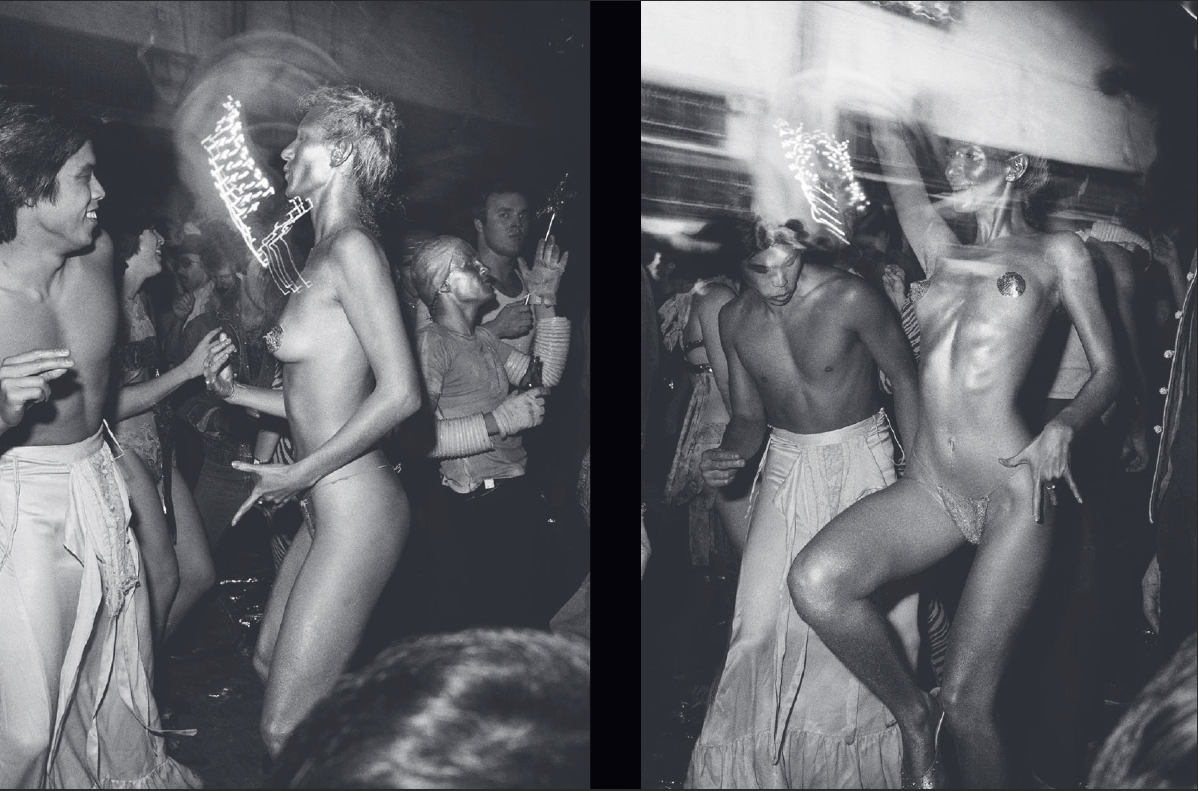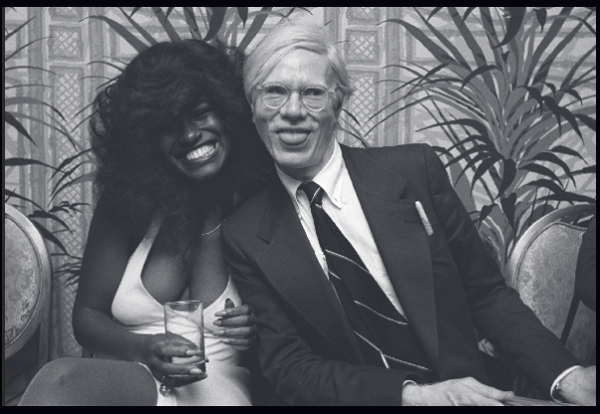
Andy Warhol with unknown beauty, 1979.
Lines Camera Action: Hasse Persson’s Studio 54
Swedish photographer, Hasse Persson’s latest photo anthology, Studio 54, published by Max Strom, chronicles the rise and fall of the legendary discotheque started by two gay entrepreneurs, Steve Rubell and Ian Schrager. Opened only for three years from ‘77 to ‘80 before getting shut down by the IRS, Tax authorities, and police raids, Studio 54 was doing something right. Populated by guests ranging from Warhol to Jagger to Capote, it was a hotbed of cosmopolitan chaos. Persson’s crisp, street-style photographs, captured using a secret recipe of flash and long exposure, pulse with the disco tracks spinning behind them.
A glance like this into a “hedonistic half-way-house between heaven and hell” is something to cherish; the queues to get in were so dense Frank Sinatra couldn’t even make it through the crowd to present his personal invitation, and Warhol had literal nightmares about getting rejected. Rubell, queen dictator of the door, accepted only a specific regiment of partygoers, a “tossed salad” of races, queers, and celebrities. Beyond the candid beauty of the images Persson presents, they are the skeleton key to a club you probably couldn’t get into.
His book is filled with energized black and white photographs, packed with scantily clad socialites and dazed celebs alike. The pictures whir with lights, masks, and glitter-smeared bodies stumbling down the avant-garde rabbit hole that was Studio 54.
